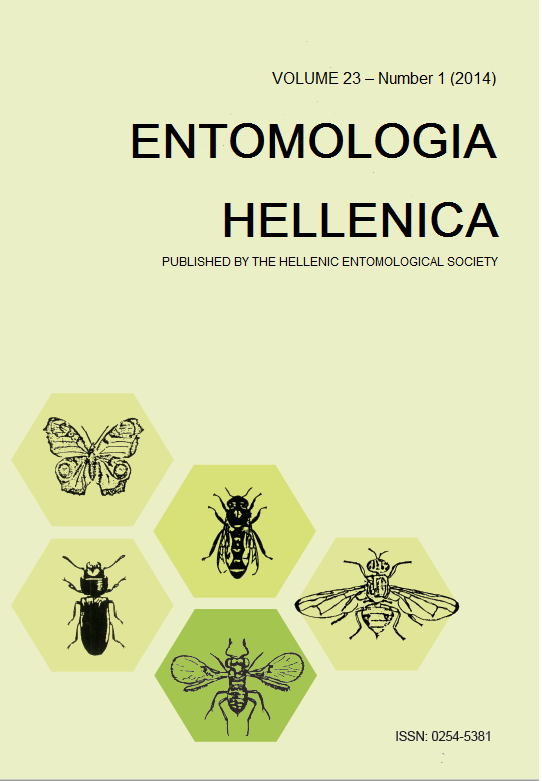Reproductive incompatibility between genetically differentiated populations of Tetranychus urticae from different host plants

Abstract
The study of host plant adaptation in arthropods, and especially agricultural pests, presents great interest, as it relates to patterns of population isolation and differentiation, with effects ranging from gene flow restriction to speciation. Prompted by our earlier isoenzyme studies that revealed genetic differentiation of Tetranychus urticae (Koch) collected on citrus, compared to other host plants, we investigated crossing compatibility between T. urticae collected from citrus (lemon) trees (ELCI) and T. urticae collected from the weed Mercurialis annua (ELMA), in the same citrus grove. Crossing compatibility in haplodiploid species where unfertilised eggs develop into males, like T. urticae, is assessed based on both the number and the sex ratio of the offspring. When ELMA females were crossed with ELCI males, fecundity was not affected, however the sex ratio was significantly biased towards males (16.6 % females, compared to 66% in the control cross ELMAxELMA). In the reciprocal crosses (ELCIxELMA), fecundity was lower by 30% and the proportion of female offspring was reduced to 52% from 67 %, compared to the control. The fecundity of the F1 hybrid females was significantly reduced and the eggs they laid were less viable, compared to the non-hybrids, further reducing the reproductive potential of inter-strain crosses. Combined with previous data, these results suggest the existence of a citrus-associated T. urticae host race.
Article Details
- How to Cite
-
Fytrou, N., & Tsagkarakou, A. (2014). Reproductive incompatibility between genetically differentiated populations of Tetranychus urticae from different host plants. ENTOMOLOGIA HELLENICA, 23(1), 29–38. https://doi.org/10.12681/eh.11532
- Issue
- Vol. 23 No. 1 (2014)
- Section
- Articles

This work is licensed under a Creative Commons Attribution-NonCommercial-ShareAlike 4.0 International License.
Authors who publish with this journal agree to the following terms:
Authors retain copyright and grant the journal right of first publication with the work simultaneously licensed under a Creative Commons 4.0 license.
Authors are able to enter into separate, additional contractual arrangements for the non-exclusive distribution of the journal's published version of the work (e.g. post it to an institutional repository or publish it in a book), with an acknowledgement of its initial publication in this journal. Authors are permitted and encouraged to post their work online (preferably in institutional repositories or on their website) prior to and during the submission process, as it can lead to productive exchanges, as well as earlier and greater citation of published work.


